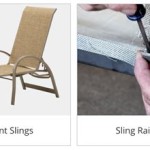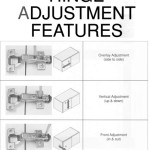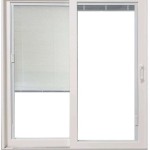Best Rated Propane Patio Heaters: A Comprehensive Guide
As outdoor living spaces become increasingly integrated into residential and commercial properties, the demand for effective and aesthetically pleasing heating solutions has surged. Propane patio heaters offer a compelling option, providing reliable warmth and extending the usability of patios, decks, and outdoor seating areas well into the cooler months. This article provides a comprehensive overview of the best-rated propane patio heaters, analyzing key features, performance metrics, and considerations for selecting the optimal model for individual needs.
Propane patio heaters are typically categorized into several styles: freestanding, tabletop, and wall-mounted. Freestanding models, often referred to as mushroom heaters due to their distinctive shape, are the most common type. They are self-contained units offering a broad area of heat coverage, making them suitable for larger patios and open spaces. Tabletop heaters are smaller and more portable, ideal for providing localized warmth to smaller groups seated at a table. Wall-mounted heaters offer a space-saving solution and are often used in covered patios or outdoor dining areas. Each type presents distinct advantages and disadvantages depending on the specific application and spatial constraints.
The selection of a propane patio heater should be carefully considered, factoring in several crucial elements. These include heat output, measured in British Thermal Units (BTUs), fuel efficiency, safety features, construction materials, and overall design. Understanding these factors and their interplay is crucial for making an informed decision and maximizing the value and enjoyment derived from the chosen heating solution.
Understanding Heat Output (BTUs) and Coverage Area
The heat output of a propane patio heater, denoted in BTUs, is the primary indicator of its heating capacity. A higher BTU rating translates to a greater amount of heat generated per hour. Determining the required BTU rating depends largely on the size of the area to be heated and the ambient temperature. For smaller patios or enclosed spaces, a heater with a BTU rating of 40,000 may suffice. Larger, more open areas, or those experiencing colder climates, may necessitate a heater with 45,000 BTUs or higher.
It's important to understand that the stated BTU rating represents the maximum potential heat output. The actual effective heating radius can be affected by factors such as wind, humidity, and the presence of obstructions. Manufacturers typically provide an approximate coverage area for each model, but this should be considered a guideline rather than a definitive measure. When evaluating heat coverage, consider the typical seating arrangement and the overall layout of the outdoor space. Positioning the heater strategically to optimize heat distribution can further enhance its effectiveness.
Furthermore, some propane patio heaters offer adjustable heat settings, allowing users to regulate the BTU output according to their specific needs. This feature provides greater flexibility and can help conserve propane by reducing fuel consumption when maximum heat output is not required. Models with adjustable settings are particularly beneficial for environments with fluctuating temperatures or varying occupancy levels.
Fuel Efficiency and Propane Consumption
Fuel efficiency is a critical consideration when evaluating propane patio heaters. While propane offers a relatively clean-burning and readily available fuel source, minimizing consumption is essential for cost-effectiveness and environmental responsibility. The fuel efficiency of a propane patio heater is largely determined by its design, burner technology, and heat output settings.
Most standard propane patio heaters utilize a 20-pound propane tank, which typically provides between 8 to 10 hours of continuous operation at maximum BTU output. However, this runtime can vary significantly depending on the efficiency of the heater and the specific propane tank used. Some models incorporate features such as variable heat settings and pilotless ignition systems to reduce propane consumption. Pilotless ignition systems eliminate the need for a constantly burning pilot light, thereby conserving fuel when the heater is not in use.
To optimize fuel efficiency, users should consider factors such as proper maintenance, wind protection, and strategic placement of the heater. Ensuring that the burner is clean and free of debris can improve combustion efficiency. Shielding the heater from strong winds can prevent heat loss and reduce the strain on the burner. Furthermore, positioning the heater in a sheltered area or using windbreaks can significantly enhance its performance and extend the runtime of a propane tank.
Safety Features and Construction Materials
Safety is paramount when operating any propane-fueled appliance, and patio heaters are no exception. Modern propane patio heaters are equipped with a range of safety features designed to prevent accidents and ensure safe operation. These features typically include a tip-over safety shut-off valve, which automatically cuts off the gas supply if the heater is accidentally knocked over. This feature is particularly important in areas with high winds or heavy foot traffic.
Another crucial safety feature is an oxygen depletion sensor (ODS), which monitors the oxygen levels in the surrounding air. If the ODS detects a significant drop in oxygen, it will automatically shut off the heater to prevent carbon monoxide buildup. This feature is essential for enclosed or poorly ventilated spaces. Additionally, some models incorporate a flame failure device (FFD), which automatically shuts off the gas supply if the flame is extinguished unexpectedly.
The construction materials used in propane patio heaters play a significant role in their durability, weather resistance, and overall safety. Stainless steel is a commonly used material for the burner assembly and housing, offering excellent corrosion resistance and longevity. Aluminum is often used for the reflector hood, providing efficient heat reflection and lightweight construction. The base of the heater should be sturdy and stable, typically constructed from heavy-gauge steel or durable composite materials.
Furthermore, the design of the heater should consider accessibility and ease of use. Features such as convenient ignition systems, easy-to-read controls, and accessible propane tank compartments contribute to a safer and more user-friendly experience. Prioritizing models with robust safety features and durable construction materials is essential for ensuring the long-term reliability and safety of the propane patio heater.
Beyond these core considerations, other features can enhance the user experience and overall value of a propane patio heater. These include portability, ease of assembly, aesthetic design, and warranty coverage. Models with built-in wheels or casters are easier to move and reposition as needed. Clear and concise assembly instructions, along with readily available customer support, can simplify the setup process. A well-designed heater can complement the aesthetic of the outdoor space and enhance its overall appeal.
Warranty coverage provides additional peace of mind, protecting against manufacturing defects and premature failure. Reputable manufacturers typically offer warranties ranging from one to three years on their propane patio heaters. It is crucial to carefully review the warranty terms and conditions to understand the scope of coverage and any limitations that may apply.
When selecting a propane patio heater, it is beneficial to consult customer reviews and ratings. Online retailers and consumer advocacy websites often provide valuable insights into the real-world performance and reliability of different models. Pay attention to reviews that address issues such as heat output, fuel efficiency, durability, and ease of use. Consider both positive and negative feedback to gain a balanced perspective and identify any potential drawbacks or limitations.
Understanding the various features, safety considerations, and performance metrics associated with propane patio heaters is crucial for making an informed decision. By carefully evaluating individual needs and preferences, and considering the factors outlined in this article, individuals can select the optimal propane patio heater to enhance their outdoor living spaces and extend the usability of their patios and decks throughout the year.
Flamepro Table Top Patio Heater With Adapter Hose Costco

The 5 Best Outdoor Patio Heaters Of 2025 Reviews By Wirecutter

The Best Propane Patio Heater For Your Space Our Guide Authenteak

Fire Sense 10 000 Btu Hammered Broe Tabletop Propane Gas Patio Heater 61322

8 Best Patio Heaters To Buy In 2024 According Reviews

Fire Sense Table Top Patio Heater Hammer Tone Broe

The 5 Best Outdoor Patio Heaters Of 2025 Reviews By Wirecutter

Heatmaxx Tabletop Propane Patio Heater 10 000 Btu

Best Gas Patio Heaters 2024 Propane Heater Reviews

Paragon Outdoor Vulcan Round Flame Tower Heater 82 5 32 000 Btu
See Also








